Seventh Circuit Confirms Additional Insured's Coverage for Alleged Construction Defects
August 10, 2017 —
Tred R. Eyerly - Insurance Law HawaiiThe Seventh Circuit held that the underlying complaint alleged an occurrence by asserting that the painting subcontractor was negligent in causing damage to the building. Westfield Ins. Co. v. Nat'l Decorating Serv., Inc., 2017 U.S. App. LEXIS 12516 (7th Cir. July 13, 2017).
McHugh Construction, the general contractor for construction of a 24 story condominium building in Chicago, retained National Decorating Service, Inc. as a subcontractor to perform all of the painting work. This meant National Decorating would paint the exterior of the building with a protective coating that was a waterproof sealant.
After completion, the building's board of managers sued McHugh, National Decorating, and others for damages resulting from faulty workmanship. The third amended complaint alleged: (1) significant cracking of the exterior concrete walls, interior walls, and ceilings; (2) significant leakage through the exterior concrete walls, balconies, and windows; (3) defects to the common elements of the building; and (4) damage to the interior ceilings, floors, interior painting, drywall, and furniture in the units.
Read the court decisionRead the full story...Reprinted courtesy of
Tred R. Eyerly - Insurance Law HawaiiMr. Eyerly may be contacted at
te@hawaiilawyer.com
California Supreme Court Finds that When it Comes to Intentional Interference Claims, Public Works Projects are Just Different, Special Even
April 20, 2017 —
Garret Murai - California Construction Law BlogEarlier, we reported on a California Court of Appeals decision – Roy Allan Slurry Seal, Inc. v. American Asphalt South, Inc. – which held for the first time that a second-place bidder on a public works contract could sue a winning bidder who failed to pay its workers prevailing wages, under the business tort of intentional interference with prospective economic advantage.
Fast forward nearly two years, several amicus briefs, and “one doghouse”* later and the California Supreme Court has . . . reversed.
The Roy Allan Slurry Seal Case
To catch you up, or rather, refresh your recollection . . .
Between 2009 and 2012, American Asphalt South, Inc. was awarded 23 public works contracts totaling more than $14.6 million throughout Los Angeles, Orange, San Bernardino and San Diego counties. Two of the losing bidders on those projects – Roy Allan Slurry Seal, Inc. and Doug Martin Contracting, Inc. – sued American in each of these counties for intentional interference with prospective economic advantage as well as under the Unfair Practices Act (“UPA”) (Bus. & Prof. Code §§ 17000 et seq.) and the Unfair Competition Law (“UCL”) (Bus. & Prof. Code §17200).
Read the court decisionRead the full story...Reprinted courtesy of
Garret Murai, Wendel Rosen Black & Dean LLPMr. Murai may be contacted at
gmurai@wendel.com
Times Square Alteration Opened Up a Can of Worms
January 26, 2017 —
Nadine M. Post – Engineering News-RecordCompared with some of its Manhattan neighbors, a high-rise on the corner of Seventh Avenue and West 47th Street looks standard. Like many buildings in Times Square, the 41-story retail-entertainment-hotel development, nearly topped out, has a tower springing from a boxy base that will sport a flashy billboard.
Read the court decisionRead the full story...Reprinted courtesy of
Nadine M. Post, Engineering News-RecordMs. Post may be contacted at
postn@enr.com
20 Years of BHA at West Coast Casualty's CD Seminar: Chronicling BHA's Innovative Exhibits
May 03, 2018 —
Beverley BevenFlorez-CDJ STAFFThe Bert L. Howe & Associates, Inc., (BHA) exhibit has been a fixture at West Coast Casualty's Construction Defect Seminar since the mid-1990's. Through the years, BHA has updated their display, but no matter what year, you could count on the BHA exhibit to provide a not-to-be-missed experience.
2008-BHA's sleek, rear projection display includes a screen that promotes the firm's capabilities that can be seen throughout the exhibit hall. This would be one of many innovations BHA has brought to the West Coast Casualty seminar.
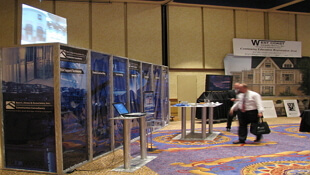
2009-With the success of the rear screen projection, BHA adds additional monitors to provide attendees with more information about BHA.
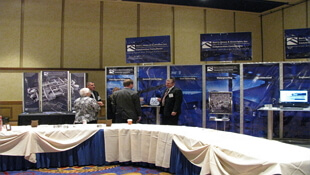
2010-BHA adds an interpretive professional development exhibit targeted to Building Envelope issues allowing adjusters and other non-construction professionals hands on access to the systems and components at the heart of many related such claims.


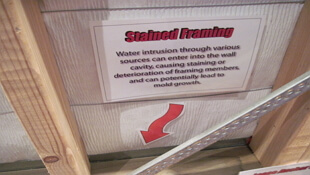
2011-BHA's Swing for Charity challenge is born.

2012-Always innovating, BHA expands its rear projection and professional development offerings to West Coast attendees.

2013-BHA showcases additional capabilities with a twenty-four foot, custom, convex, immersive video experience.

2014-BHA adds an iPhone display to give a hands-on demonstration of their data collection methods.
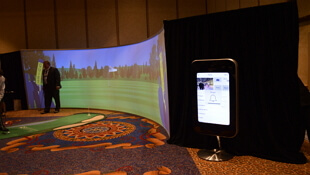
2015-BHA's twenty-four foot , custom, convex, immersive video experience was elevated with two additional rear projection screens, reflecting BHA's newest capabilities and services.

2016-BHA dazzles attendees with their new exhibit comprised of more than 15 integrated, high definition, LCD displays. iPads are stationed on tables to conveniently demonstrate BHA's data collection processes.
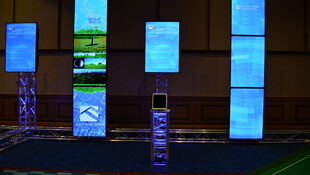
2017-BHA's Swing for Charity Golf Challenge raised $2,225.00 for the National Coalition for Homeless Veterans and $1,900 for Final Salute.
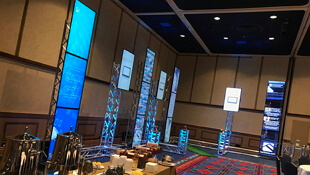
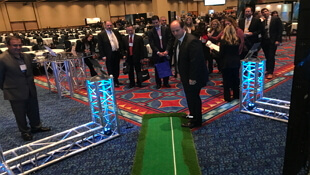
Read the court decisionRead the full story...Reprinted courtesy of
Follow Up on Continental Western v. Shay Construction
March 28, 2012 —
Brady Iandiorio, Higgins, Hopkins, McLain & Roswell, LLCWriting in Construction Law Colorado, Brady Iandiorio revisits the case Continental Western v. Shay Construction. He promises to continue to follow cases dealing with Colorado HB 10-1394.
�Recently the Court ruled on two Motions to Reconsider filed by Defendants Milender White and Shay Construction.
�Procedurally, the Motions to Reconsider were ruled on by the Honorable William J. Martinez, because the day after the motions were filed the action was reassigned to Judge Martinez. In the short analysis of the Motion to Reconsider, the court leaned on Judge Walker D. Miller’s ruling on the summary judgment and his analysis of the (j)(5) and (j)(6) exclusions.
�As a quick refresher regarding the grant of summary judgment, Judge Miller agreed with Continental Western’s argument that the asserted claims were excluded under the “damage to property” exclusion. The policy’s exclusions state: “(j) Damage to Property . . . (5) that particular part of real property on which you or any contractors or subcontractors working directly or indirectly on your behalf are performing operations, if the ‘property damage’ arises out of those operations; or (6) that particular part of any property that must be restored, repaired or replaced because ‘your work’ was incorrectly performed on it.” Judge Miller found that both exclusions (j)(5) and (6) applied to both Shay’s allegedly defective work.
Read the full story…
�Reprinted courtesy of Brady Iandiorio of Higgins, Hopkins, McClain & Roswell, LLC. Mr. Iandiorio can be contacted at iandiorio@hhmrlaw.com.
Read the court decisionRead the full story...Reprinted courtesy of
Issue and Claim Preclusion When Forced to Litigate Similar Issues in Different Forums: White River Village, LLP v. Fidelity and Deposit Company of Maryland
October 10, 2013 —
Brady Iandiorio — Higgins, Hopkins, McLain & Roswell, LLC.Often in construction litigation the parties wish to move the case to arbitration. However, there are certain circumstances in which such change of litigation forums should be carefully analyzed. The case of White River Village, LLP v. Fidelity and Deposit Company of Maryland, serves as an example of one of those circumstances.
In March 2013, U.S. District Court Judge Blackburn ruled on a motion for summary judgment filed by Fidelity and Deposit Company of Maryland (“F&D”). The order grants the motion in part and denies it in part. White River Village, LLP (“White River”) was the owner of the project which hired S&S Joint Venture (“S&S”), the contractor, to build two similar developments, directly adjacent to each other. The contracts between Whiter River and S&S for the two projects were so substantially similar that the court referred to them as the S&S Contracts. F&D issued payment and performance bonds guarantying the obligations of S&S under the S&S Contracts.
After S&S defaulted on the construction contracts, F&D, as the surety, undertook to complete performance on the contracts. White River alleged that F&D was liable for construction defects and delays in completing the project, and failed to fulfill its obligations under the performance bonds after it overtook the construction of the projects.
Read the court decisionRead the full story...Reprinted courtesy of
Brady IandiorioBrady Iandiorio can be contacted at
Iandiorio@hhmrlaw.com
Recent Opinions Clarify Enforceability of Pay-if-Paid Provisions in Construction Contracts
May 29, 2023 —
Patrick McKnight - The Dispute ResolverSeveral recent opinions and legislative actions have brought the controversial nature of pay-if-paid provisions into focus in early 2023. Pay-if-paid provisions are contractual mechanisms designed to shift the risk of non-payment from General Contractors to lower-tier subcontractors. In other words, pay-if-paid provisions generally do not require payment to downstream subs until after the GC or Prime are themselves paid in-full by the owner. Recent developments reflect the differing approaches taken by courts when addressing pay-if-paid provisions, ranging broadly from prohibition to full enforceability. Other jurisdictions fall somewhere in the middle, viewing such provisions with varying amounts of skepticism on the grounds heir impact on smaller downstream subs is disproportionate and unfair.
Pay-if-paid provisions are often contrasted against “pay-when-paid” provisions. Pay-when-paid provisions may require payment within a specified duration but remove the upstream contractor’s payment in-full as a condition precedent. The brief discussion below will not explore pay-when-paid, no damage for delay provisions, or statutory prompt payment acts. Instead, this article serves as a primer on recent legal developments related to pay-if-paid provisions exclusively.
Read the court decisionRead the full story...Reprinted courtesy of
Patrick McKnight, Fox Rothschild LLPMr. McKnight may be contacted at
pmcknight@foxrothschild.com
Strategy for Enforcement of Dispute Resolution Rights
May 30, 2018 —
Whitney Judson - Smith CurrieArbitration and litigation each offer their own benefits and drawbacks to litigants looking to resolve a construction dispute. A careful analysis of these benefits and drawbacks may be helpful in determining whether to avoid or pursue either dispute resolution process. Arbitration is oftentimes regarded as the more economically feasible dispute resolution option and is therefore attractive to many construction dispute litigants. Although arbitration may prove to be less expensive than litigation in the long run, some litigants may prefer to file a case in court because the upfront filing fees in litigation are less expensive than the filing fees of arbitration.
Litigants may also prefer the decision makers of one process for dispute resolution over another. Arbitrators in a construction dispute oftentimes have a background in the construction industry, whereas a judge or jury may not. Strategy may dictate whether the preferable decision maker should have experience within the construction industry or be free of any construction industry knowledge and possible biases. The finality of decisions may also be a reason to strategically choose one dispute resolution process over another. Arbitration decisions are overturned only under very narrow and specific circumstances. The losing party in litigation however, has a right to appeal decisions to a higher court and has more options for recourse when the findings of the court are not supported by the evidence or the law.
Read the court decisionRead the full story...Reprinted courtesy of
Whitney Judson, Smith CurrieMs. Judson may be contacted at
wtjudson@smithcurrie.com




































































